(ABOVE) Organic green tea and Guy Degrenne teapot with cozy (four-cup, six-cup or eight-cup).
[line]
The Accoutrements
Every afternoon, I drink tea. I do it as much for my mental as well as physical health, so I begin with accessories that I enjoy looking at, holding, and drinking or eating from, and I do it in a place that is quiet enough to allow relaxation and the release of tension.
My four-cup teapot, with its highly polished stainless steel cozy-lid, is a clean, smooth mid-century design. The cup, saucer, and plate, also of white porcelain, are simple, plain and have no manufacturer’s markings; I found them on line at a tea purveyor. The tea strainer, which I’ve had for nearly 20 years, is stainless steel with a decorative but unfussy design I like. All are pretty to me, but just as important, they also are easy to keep tea-stain free with a non-scratch scrub sponge, teapot spout brush, a little water, and baking soda. I just have to be willing to do it regularly (which, I confess, I don’t).
Most people use one heaping teaspoon of tea leaves for each cup. I use a heaping half teaspoon for two 4-cup pots of tea, to reduce the amount of caffeine consumed.
[line]
Tea Types, Which Is Healthiest
Tea comes from the leaves of the Camellia sinensis plant and consists of four main types, based on the way the leaves are processed: white, green, black, and oolong.
White and green are the least processed, so are thought to retain the most antioxidants known as polyphenols. Oolong is slightly more processed, and black tea is processed the most. All contain antioxidants in varying levels, which fight the free radicals that “change cells, damage DNA, and even cause cell death,” according to the University of Maryland Medical Center.
Tea is thought to reduce blood pressure; improve bone health, muscular strength and cognitive function; and may reduce the risk for cancer. It also positively influences beneficial bacteria in the digestive track, since polyphenols are able to reach the colon (U.S. National Library of Medicine). For foods containing the most polyphenols per serving, visit the European Journal of Clinical Nutrition.
An avid English breakfast black-tea drinker, it took some time for me to learn to love the milder flavor of green tea–particularly since I drink it much weaker than recommended for taste (to reduce the caffeine level). Now three years into this change, I drink Hampstead Tea London Organic Green (above and below), and quite enjoy it.
[line]
Tea Bags or Loose Leaf Tea
Although I drank black tea for years (English breakfast with milk and sugar and usually a scone on the side), I changed to green tea in June 2012 and stopped using tea bags. I also gave up dairy, sweeteners, and grains (due to several chronic health issues; more on that here).
Why no teabags anymore? The leaves in teabags are traditionally much smaller than loose-leaf tea. Since larger leaf tea maintains more antioxidants, it’s thought to be healthier. I also don’t use a tea infuser, tea ball, or teabags because whatever they are made of leaches into the tea—from metals to chemicals, even plastics. To avoid this, I use a hand-held, stainless-steel tea strainer, but only when the water level has reached the bottom of the pot; until then, few leaves end up in my teacup anyway, so I don’t need it.
Why Tea Bags and Coffee Filters May Not Be So Safe
If you think teabags are safe, know that some teabags look like paper but are made of nylon, viscose, rayon, PVC, or polypropylene. All are bad for you.
Many paper teabags are not much better, as they are treated with the same compound used as a pesticide. (It’s also found in coffee filters). If, like me, you stay away from grains for health reasons, you also don’t want to buy a well known organic tea brand, only to find out the teabags are made from corn–and not even organic corn. (I discovered this by calling the manufacturer; it wasn’t on the tea package or website.)
I absolutely adore my glass, whistling tea pot! It not only looks and sounds lovely, it also doesn’t leach any nasty metals, plastics, etc. into my tea water. Speaking of water, I do not use water from the tap. For all cooking and drinking, I use Mountain Valley Spring Water, which is delivered in five-gallon glass bottles.
[line]
Tea or Herbal Tea
Herbal teas, in fact, are not tea at all; they are tisanes. Tisane (pronounced ti-zane), is the French word for “herbal infusion”. Unless it is mixed with actual tea leaves, a tisane is caffeine-free and is made from dried flowers, fruits, spices, or herbs steeped in boiling water. ~ Janis Lyn Johnson
For the perfect pot of green tea, Hampstead Tea London recommends bringing water to a boil, pouring it over the tea leaves, then steeping the leaves for three minutes. I, personally, prefer four minutes. Either way, a tea timer takes the worry out of over doing it.
When I take the time to use these tools above, my tea pot, tea strainer, and teacups are free of stains.
Guy Degrenne Teapot: Four-Cup or Six-Cup or Eight-Cup / Cups and Saucers: Service For Six or Single Cup and Saucer / Tea Kettle: Medelco Whistling Kettle / Kitchen Timer: Amazon.com / Non-Scratch Scrub Sponge: Scotch Brite / Organic/Fair Trade Green Tea: Hampstead of London / Mountain Valley Spring Water: Available Here / Teapot Cleaning Brush: Amazon.com

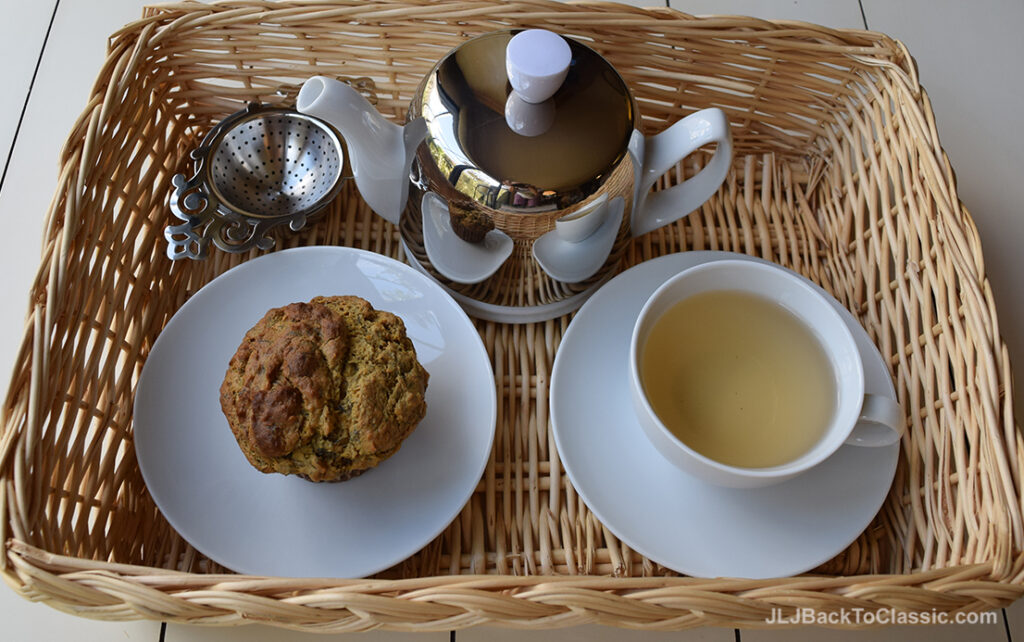
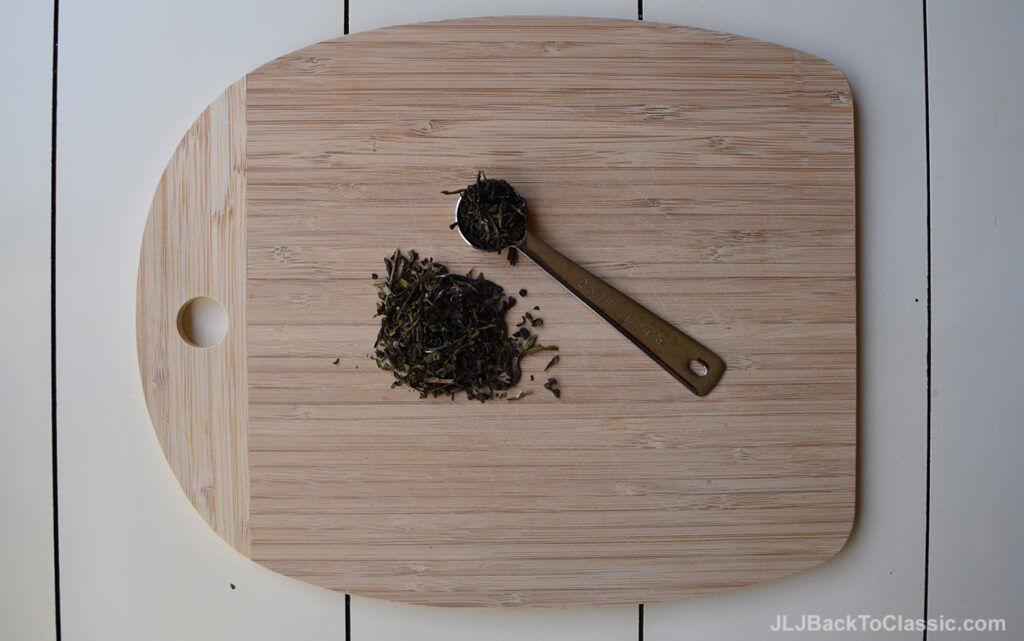
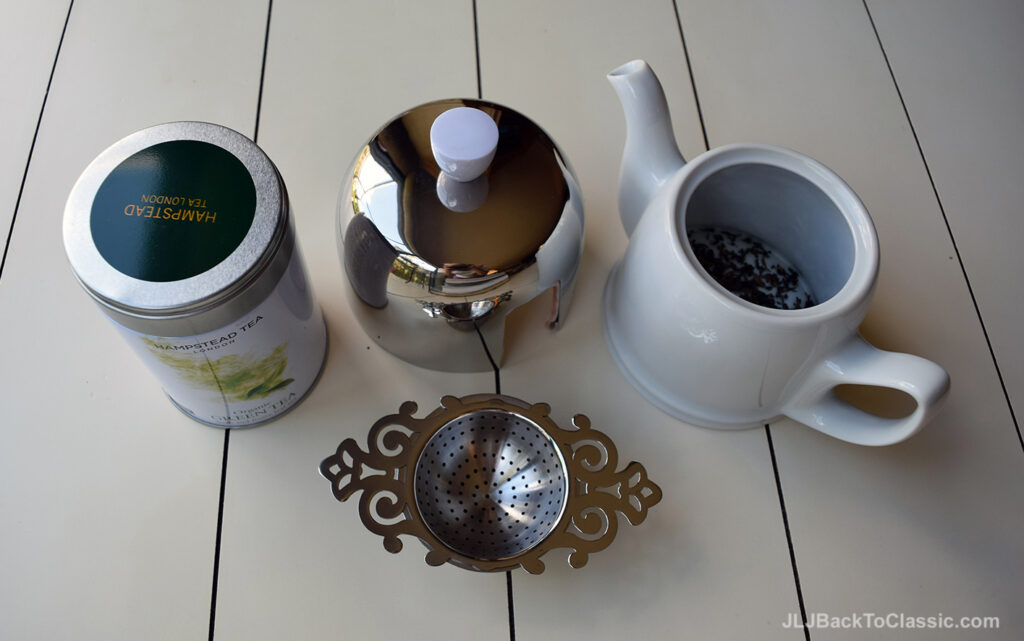
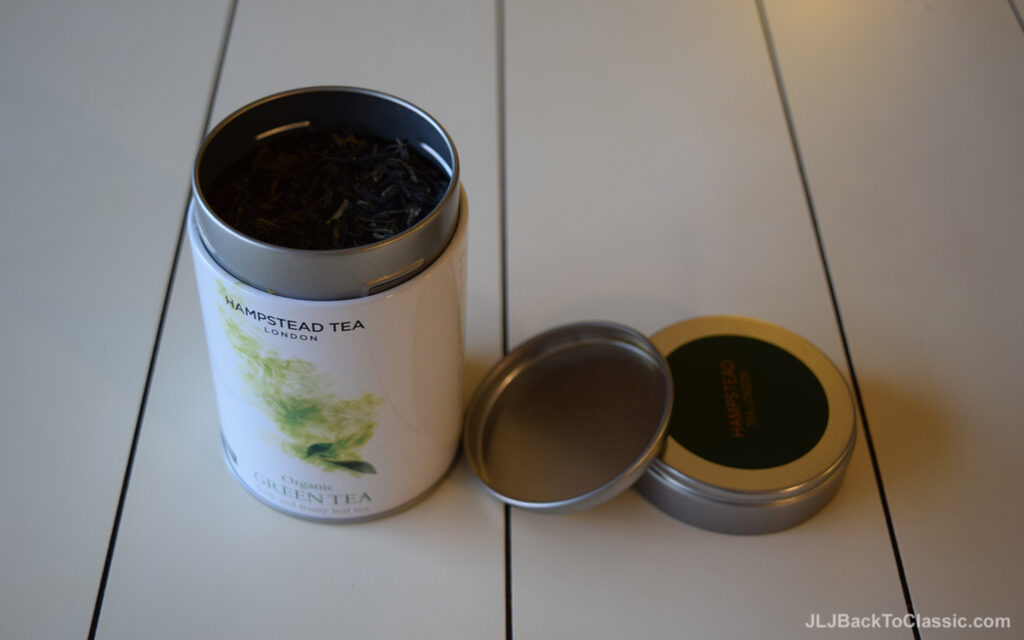

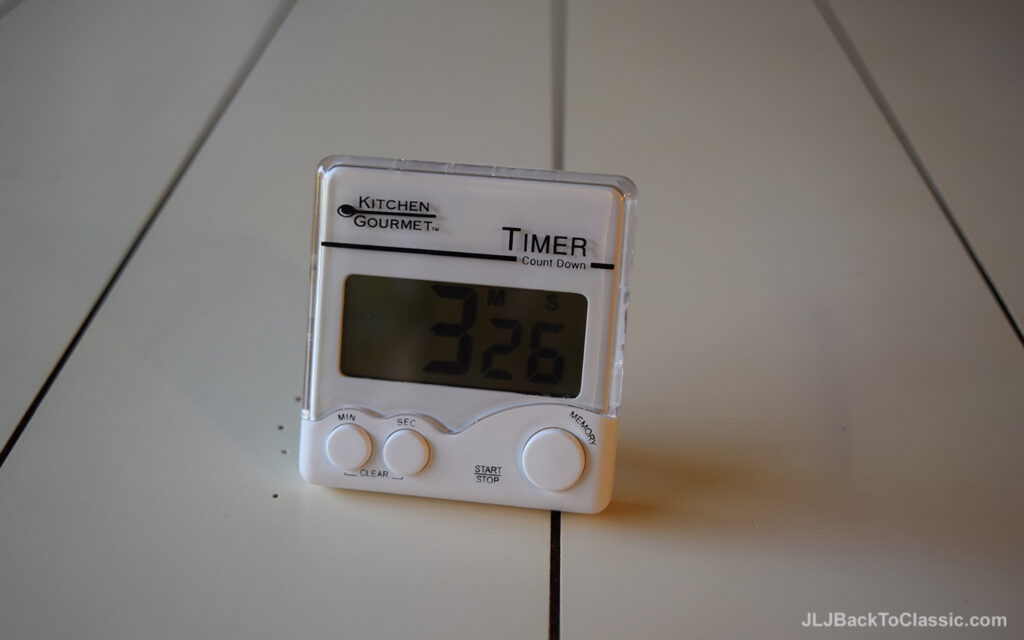
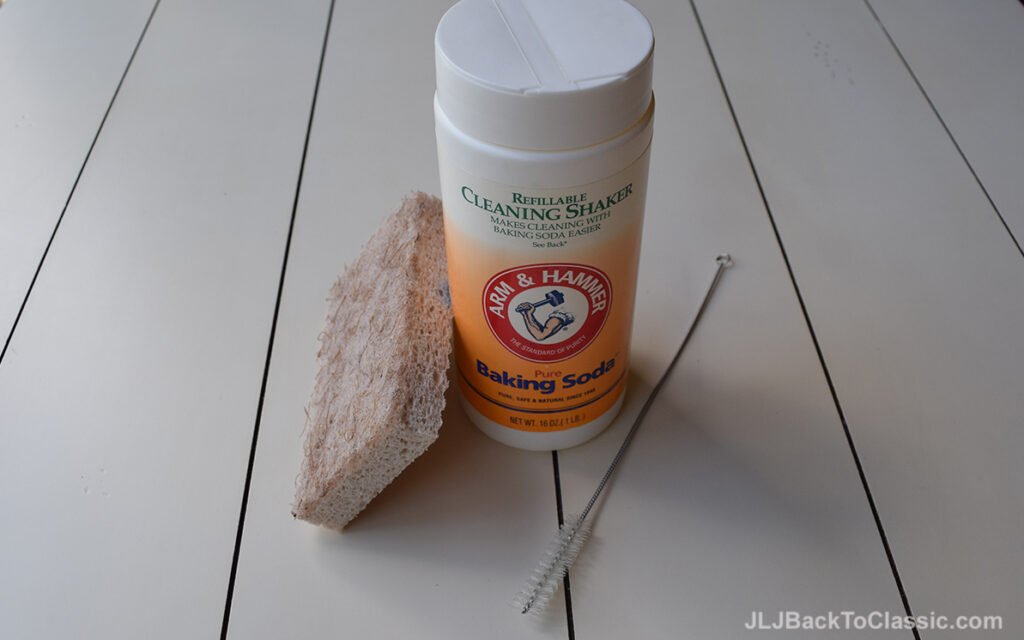
I would love the recipe for the muffins! Please ?
Hi, Adine! I’m not sure it’s good enough to share yet. But I promise I definitely will post it when I feel like it’s good enough. 🙂 ~Janis
Hi Janis, I’m new to your blog and channel and love them! My feeling is, your muffin recipe doesn’t have to be perfect. I, for one, would really enjoy having it! The ingredient list meets all my specifications and very few do. Plus, they look wonderful!
All the best to you,
Sue
I have been enjoying your Back To Classics channel. How nice to find this website. I am amazed at how weak you make your tea. Perhaps I have misunderstood, but are you using a heaping half teaspoon to make two 4 cup pots of tea? Why bother? That is just water essentially. I will go back and re check the information…..I am also an appreciative tea drinker, and have it every morning.
Hi, Katherine! Yes, that is how I make my tea. I was off of all caffeine for quite a while, so by the time I brought it back into my diet I was so grateful to be able to even have the taste of tea that I didn’t notice it wasn’t as strong as I used to drink. 🙂